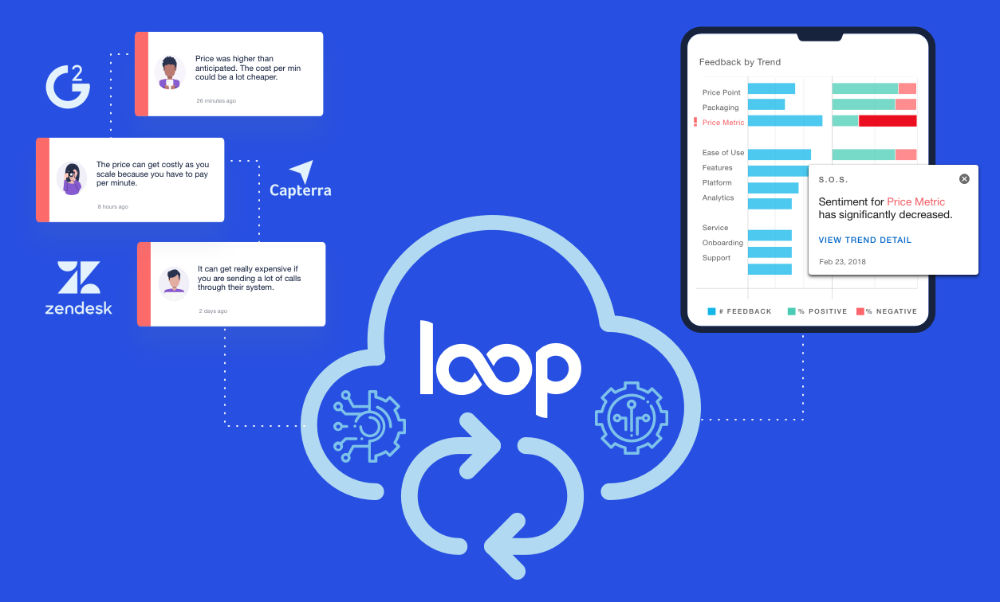Home » Four Steps to Becoming a High-Performing Marketing Team
Four Steps to Becoming a High-Performing Marketing Team
Madeline Turner

Only 15% of marketing organizations are considered high-performing. This means that 85% of marketing organizations are still struggling to get it right.
But what is a high-performing marketing organization? And what is it that the other 85% can do to catch up? Mathew Sweezey, Director of Market Strategy at Salesforce, has been leading research to define high-performance and guide businesses through the transformation that needs to happen to deliver amazing customer experiences.
[Watch our full interview with Mathew here]
Mathew points out that there are 4 basic fundamentals of high-performing marketing organizations:
- They have executive buy-in. Meaning, executive leadership understands this will cost money and that specific resources will be needed to steer the ship.
- They have the right technology, which includes a central repository as well as an execution layer
- There is an executive in charge of overseeing the entire customer experience
- They operate from a natural perspective, which allows them to move and test quickly
Becoming a high-performing marketing team isn’t easy. Not only do marketers have to start thinking differently about how we do our jobs, but we also have to start thinking differently about how we measure performance.
Context is everything. But marketers are often disconnected from customers, which makes truly understanding the customer experience difficult.
Here are four steps your marketing team can take to build experiences that drive performance and Customer-Led Growth:
Stay Connected to Your Customers
Marketers have been trained that if they’re great marketers, their job is to come up with some thing that’s so brilliant it convinces somebody else to do something.
Mathew points out that this is our problem — this mad man era idea that all marketing is just creative genius. You come up with an ad and push it out to a marketplace. And the only time you speak with customers is to say “what do you think of the ad I created for you?”.
Marketing isn’t about creative genius. It first starts with understanding your customers, and from that understanding, we then know what to do. And then we need to constantly stay with customers to understand how it changes and at the speed that it needs to change. – Mathew Sweezey, Director of Market Strategy, Salesforce
Mathew points to an example of Trader Joe’s. Rather than the CEO focusing on PR, he spent his time talking to customers. Every week, he’d hop on a plane and fly to a different Trader Joe’s. At the stores, he’d find a customer and ask if he could shop with them around the store. Then, as they shopped, he’d pull food off of shelves and asked if they’d tried it. He’d open up the food and get real-time feedback from real customers.
Most grocery stores have six figures of SKUs. Trader Joe’s has ~1,200. They’re focused solely on what their customers want to see on the shelves. And they know what their customers want because of how deeply they understand them.
This is how the role of marketing has to shift. Decisions made based on a deep understanding of customers rather than a really great idea or gut feeling.
Make CX and UX part of Marketing’s role.
First, off we need to understand that CX and UX are a part of marketing’s role. Marketing is no longer a siloed organization at the very front of the customer lifecycle.
Digital transformation is the organization evolving itself into a new era. If we don’t bring the practice of marketing along with that transformation, then it’s all for naught. And what that means is the expansion of marketing across the customer journey. UX and CX now become elements of marketing just as much as any other customer experience touchpoint. It’s not about how creative your message is. It’s about how consistent and amazing each experience is that guides customers to the place they want to go. Mathew Sweezey, Director of Market Strategy, Salesforce
To do this, marketers must have real-time data on how people are using their products. Without this, you cannot understand how to reduce churn or how to increase customer lifetime value, which are two major growth levers that marketing must own.
Mat conducted research and asked 400 B2B buyers if they had ever been disappointed with their experience, like content they downloaded from a brand. 71% of B2B buyers said yes. That’s not the surprising statistic. The surprising statistic is to what level they were disappointed. 25% of those people said they would never engage with those brands ever again.
If we’re only looking at the purely quantitative metric like downloads or views, it seems positive. But are we following up with them to see if we provided the experience they actually wanted or expected?
Less than 1% of marketers have ever picked up the telephone to call somebody and ask them what they thought of that experience and how they can make it better for the next person. – Mathew Sweezey, Director of Market Strategy, Salesforce
As marketers, we must realize that customer experiences are our priority, and UX and CX are a part of that. But we also can’t just rely on numbers. Rather than siloed metrics within a siloed organization, we have to think about experience metrics across the entire journey.
Look beyond performance metrics
As we saw above, data without context can be misleading. If we’re looking only at performance metrics (downloads, sign-ups, views, opens), we’re not looking at the full picture. We’re only looking at a point of the journey rather than the complete experience.
Rather than performance metrics, we must look at experience metrics. Mat gave customer support metrics as an example.
Many Customer Support organizations are focused on getting questions answered in under a minute. But there’s not an organizational discipline to say “that’s a problem or a bad experience — let’s fix it.” If we fix the experience, revenue, lifetime customer value, and reduced churn goes up. The goal isn’t to answer questions in under 30 seconds. It’s to ensure that the question is answered as efficiently and effectively as possible. Mathew Sweezey, Director of Market Strategy, Salesforce
When we look past individual metrics and instead focus on the experience, we move from creating based on specific steps and instead create based on the entire experience.
To do this, you need to have a central repository for customer data. Then you need to have things that are connected in an ecosystem and an automation layer to scale concepts. Having disjointed tools won’t help. They have to be connected at a high-level so that data can be shared as easily and seamlessly as possible.
Appoint a leader
One of the problems that organizations face is defining ownership. Without an owner of the experience, tension is created across teams and we’re often left focused on performance metrics rather than the entire experience.
Rather than looking at specific performance metrics (like time to resolution in Customer Support), this leader looks across every touchpoint and focuses on how to ensure that problem within the experience is resolved (why did they call in the first place?).
If we don’t measure it, it doesn’t get improved.
If we want our customers to have this frictionless experience with our brand, there needs to be a leader in charge of measuring, testing, and iterating across the entire journey.
This is about embracing agile methodologies and embracing a new way of work.
High-performers are constantly innovating and they’re already ahead. Most of us are just trying to catch up to where they are today. When we catch up to where they are today, they are already going to be in another place. – Mathew Sweezey, Director of Market Strategy, Salesforce



